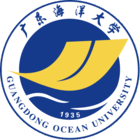详细信息
凡纳滨对虾几丁质酶的活性分布及其短波紫外线照射激活作用 被引量:1
Distribution of chitinase activity in Litopenaeus vannamei and its activation by UV-C irradiation
文献类型:期刊文献
中文题名:凡纳滨对虾几丁质酶的活性分布及其短波紫外线照射激活作用
英文题名:Distribution of chitinase activity in Litopenaeus vannamei and its activation by UV-C irradiation
作者:窦碧静[1];潘燕平[1];JULIETH Majura[1];韩梅[1];曹文红[1,2];陈忠琴[1,2];郑惠娜[1,2];高加龙[1,2]
机构:[1]广东海洋大学食品科技学院,国家贝类加工技术研发分中心(湛江),广东省水产品加工与安全重点实验室,广东省海洋生物制品工程实验室,广东省海洋食品工程技术研究中心,水产品深加工广东普通高等学校重点实验室,广东湛江524088;[2]大连工业大学海洋食品精深加工关键技术省部共建协同创新中心,辽宁大连116034
年份:2023
卷号:49
期号:5
起止页码:200
中文期刊名:食品与发酵工业
外文期刊名:Food and Fermentation Industries
收录:CSTPCD、、CSCD2023_2024、北大核心、CSCD、北大核心2020
基金:国家自然科学基金项目(41576151)。
语种:中文
中文关键词:凡纳滨对虾;几丁质酶;组织分布;短波紫外线照射;激活
外文关键词:Litopenaeus vannamei;chitinase;distribution in the tissues;UV-C irradiation;activation
中文摘要:为了解凡纳滨对虾中几丁质酶的分布及短波紫外线(ultraviolet-C,UV-C)照射对几丁质酶的作用,探究了凡纳滨对虾各组织部位几丁质酶活力、UV-C照射工艺及其对几丁质酶学性质影响。结果表明,凡纳滨对虾中肝脏、胃、肠、头壳、壳、尾几丁质酶比活力分别为(72.84±2.54)、(33.54±1.31)、(27.25±0.91)、(21.40±1.25)、(10.74±0.48)、(5.22±0.05)U/g原料。几丁质酶主要分布在虾头部位(含肝脏、胃、头壳),占比达84.83%。正交试验中UV-C照射几丁质酶的最佳工艺条件为:照射功率10 W,照射时间25 min,照射高度10 cm,此时几丁质酶比活力(27.06±0.10)U/g原料。在最优工艺下,各组织部位几丁质酶有不同程度的激活。照射前后虾头几丁质酶最适温度为40℃、最适pH由4变为5。Mn^(2+)、Zn^(2+)、Fe^(3+)、Cu^(2+)对照射前后几丁质酶抑制明显。综上可知,UV-C照射的几丁质酶具有生产壳聚糖潜能,为UV-C照射提高凡纳滨对虾副产物几丁质酶活力提供参考。
外文摘要:To understand the distribution of chitinase in Litopenaeus vannamei and the effect of ultraviolet-C(UV-C) irradiation on chitinase, the chitinase activity in various tissues of L. vannamei and the process of UV-C irradiation and its effects on the characteristics of chitinase were studied. The results showed that the specific activity of chitinase in the liver, stomach, intestine, head shell, shell, and tail of L. vannamei were(72.84±2.54),(33.54±1.31),(27.25±0.91),(21.40±1.25),(10.74±0.48), and(5.22±0.05) U/g raw material, respectively. Chitinase was mainly distributed in shrimp heads(including liver, stomach, and head shell), accounting for 84.83%. The optimal process conditions for UV-C irradiating chitinase in the orthogonal experiment were: irradiation power of 10 W, irradiation time of 25 min, and irradiation height of 10 cm, under which the specific activity of chitinase was(27.06±0.10) U/g raw material. The chitinase in different tissues was activated to different degrees under the optimal process. The optimum temperature of chitinase before and after irradiation in shrimp heads was 40 ℃, and the optimum pH was changed from 4 to 5. Mn^(2+), Zn^(2+), Fe^(3+), and Cu^(2+)inhibited the chitinase before and after irradiation significantly. In conclusion, the chitinase after UV-C irradiation has the potential to produce chitosan, which provides a reference for UV-C irradiation to improve the chitinase activity in by-products of L. vannamei.
参考文献:
![]() 正在载入数据...
正在载入数据...


